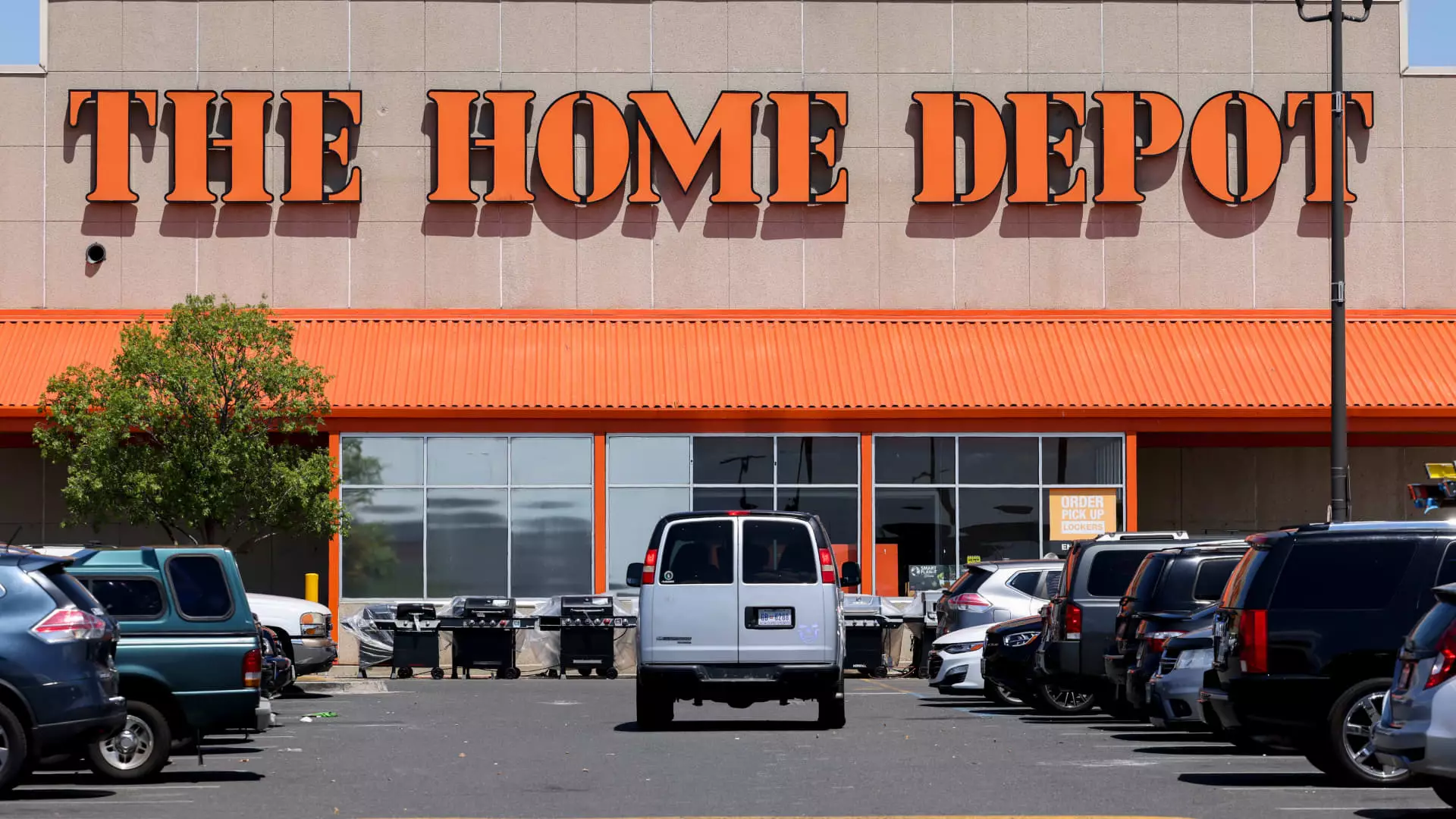Analyzing Home Depot’s Investment Potential Amid Market Uncertainty

Recent movements in the stock market have led many investors to scrutinize their portfolios, particularly in sectors beleaguered by interest rate fluctuations. One company that has come into focus is Home Depot, which has been experiencing a volatile year. With its share price fluctuating between $325 and $395, and a modest year-to-date increase of around 7%, the stock has significantly lagged behind the S&P 500’s performance of over 16%. A deeper understanding of Home Depot’s trajectory can provide valuable investment insights, especially in light of the changing housing market and the macroeconomic impact of interest rates.
The housing market has been in a precarious position, primarily due to rising interest rates. Home Depot’s fluctuating stock performance follows a path reminiscent of broader economic trends and investor sentiments. After peaking during the early months of the year, investors had to adjust expectations downward as the Federal Reserve initiated a cycle of rate hikes to combat inflation starting in March 2022. Despite this backdrop, recent decreases in bond yields fueled optimism, indicating that economic resilience might pave the way for a housing market recovery.
Home Depot’s performance is inherently tied to housing turnover, which serves as a key driver of its sales. The company’s executives have pointed out that historical trends show significant turnover increases at mortgage rates hovering between 5% and 6.5%. In the second quarter of 2023, CEO Ted Decker highlighted a correlation between dropping mortgage rates and increased housing activity — a promising indicator for the home improvement retailer as mortgage rates recently dipped to 6.29%. This ongoing shift in the housing market might be the precursory sign of an imminent recovery for Home Depot.
While investors are often looking for immediate returns, real estate dynamics operate on longer timelines. Lower mortgage rates do not instantaneously translate to increased sales for Home Depot, but they might herald a positive trend in the long run. As rates drop, the potential for a surge in housing turnover could resonate with homeowners eager to remodel or renovate properties.
The economic landscape presents a unique situation where home equity values have risen substantially. Since 2019, home equity has increased by nearly $18 trillion, with approximately $11 trillion available for home equity lines of credit (HELOCs). This substantial wealth can give homeowners the financial flexibility to invest in home improvement projects, thereby bolstering Home Depot’s sales prospects.
Given the current circumstances, one might ponder why investors should focus on Home Depot over its chief rival, Lowe’s. Both companies hold merit under the current investment thesis, but Home Depot has distinct advantages. Most notably, it holds a stronger position within the professional customer segment, which has become increasingly important. Having made a significant acquisition of SRS Distribution, Home Depot has expanded its addressable market, potentially adding $50 billion to its market cap.
Moreover, as the Federal Reserve gears up for anticipated rate cuts later this year, Home Depot may become more attractive to dividend-seeking investors. Currently sporting a dividend yield of nearly 2.4%, the stock could prove enticing as borrowing costs decrease. Notably, the company’s share buyback programs are paused until 2026, demonstrating a focus on long-term stability and growth after the recent acquisition.
While Home Depot’s short-term performance may raise some concerns, a broader evaluation suggests a potentially favorable outlook. Indicators such as a decrease in mortgage rates, rising home equity values, and strategic business decisions position Home Depot well for future growth. Industry experts suggest an optimistic view as market conditions seem primed for revival, especially if mortgage rates dip below the 5% mark.
However, it remains vital for investors to manage expectations and understand that recovery processes often take time. It is essential to react proactively to market changes, with the anticipation that Home Depot will not only weather current challenges but potentially thrive in a reimagined housing landscape. The combination of internal strategic enhancements and external market variables creates a scenario where investing in Home Depot could yield substantial dividends in the coming months.





